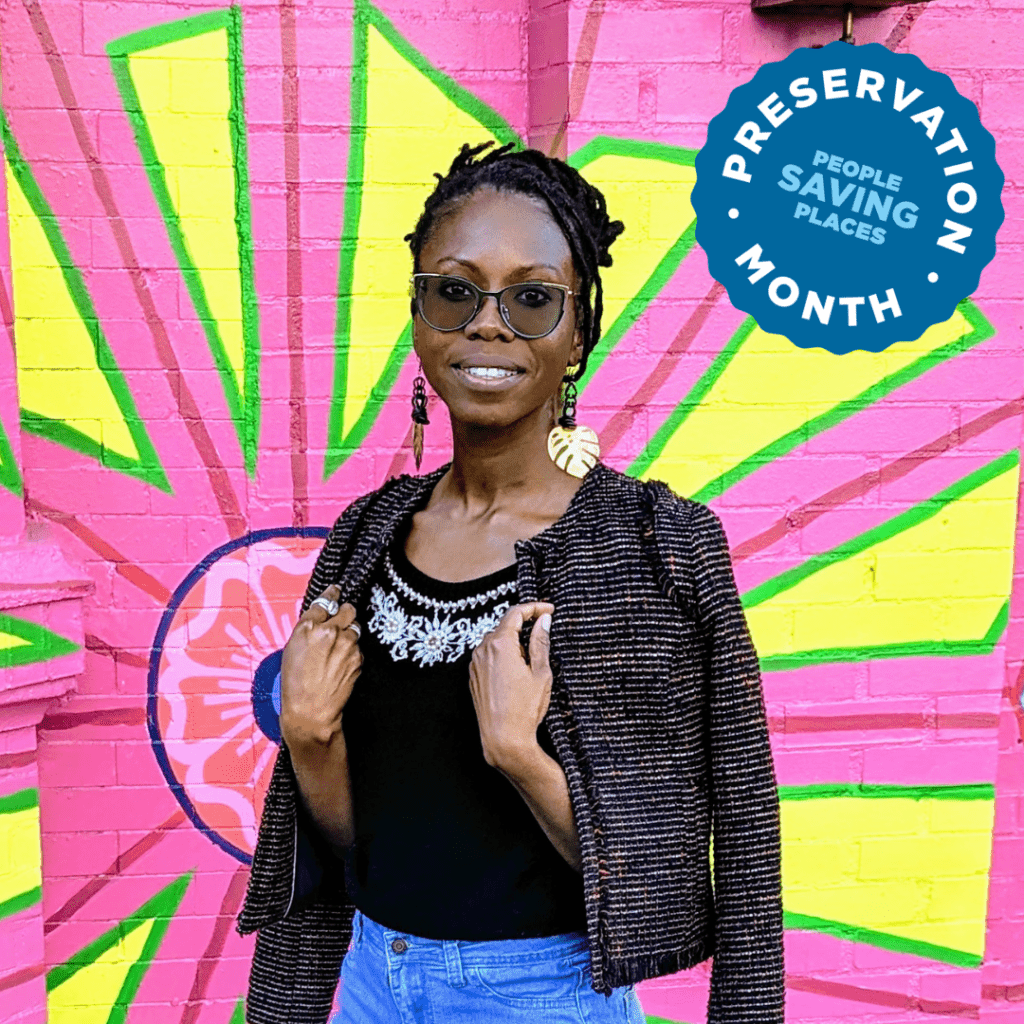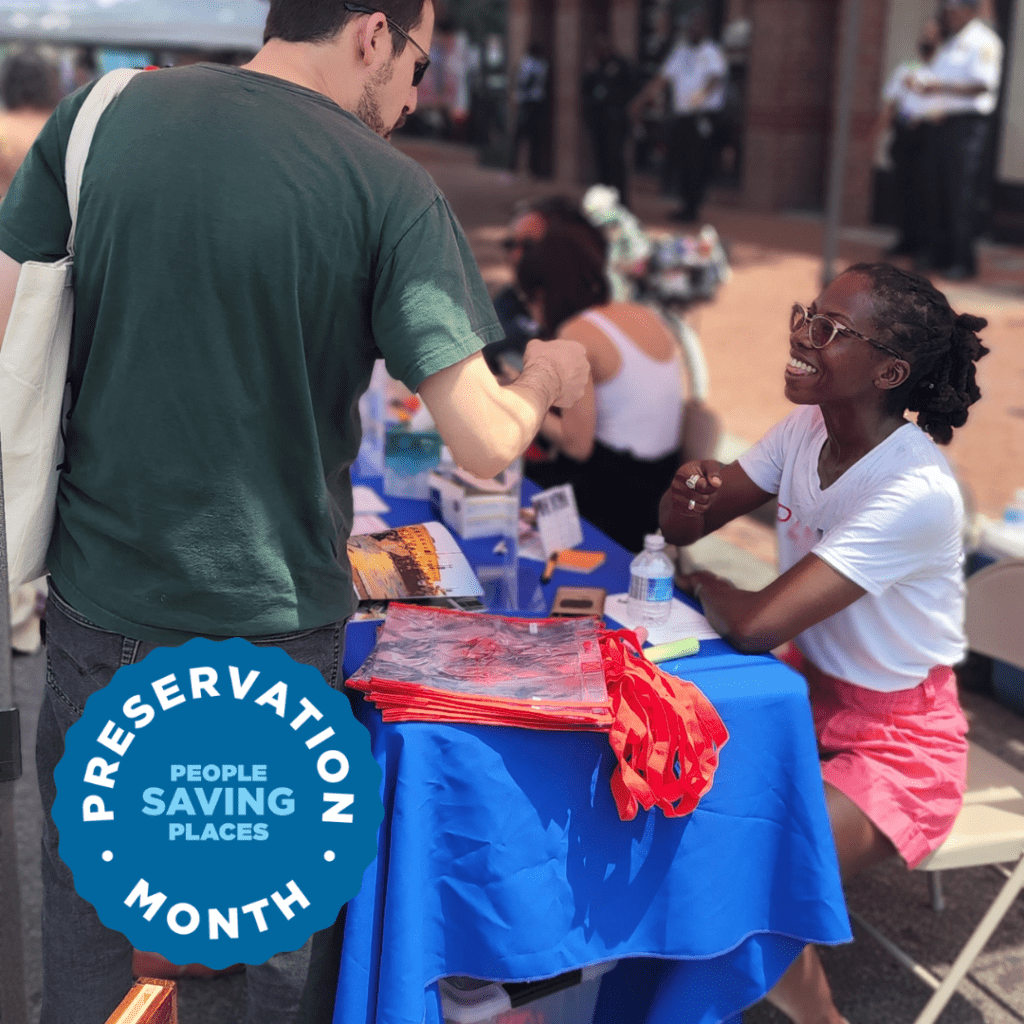How a Local Preservationist is Inspiring the Next Generation
May 10, 2024
This year’s Preservation Month theme of “People Saving Places” is a national high-five to everyone doing the great work of saving places—in ways big and small—and inspiring others to do the same. Read our interview below with Imania Price, Historic Preservation Specialist at the DC Office of Planning. Imania is the lead project reviewer for the Anacostia Historic District and plays a vital role educating residents on the relevance of historic preservation for both the Anacostia community and the city at large.
How did you get into historic preservation as a profession?
I was actually introduced to the preservation field while working as an emergency management specialist for the Federal Government. While implementing emergency policies for operations and building safety, I discovered there were Historic Preservation officers assigned to each government agency. Those officers were responsible for building maintenance of many of our country’s historic sites and buildings that house federal employees such as courthouses and state buildings. I became intrigued with the idea of protecting our country’s history through the built environment as a profession and went back to school for my master’s in historic preservation. I’ve been working in historic preservation in and around the DC area for almost a decade now.

What has been your most rewarding preservation experience so far?
Lately, I’ve had the opportunity to engage with high school students in the DC area alongside other Office of Planning professionals, discussing the significance of historic preservation and the importance of advocating for spaces that are significant to the character of their community. Witnessing the students’ enthusiasm for their environment and their understanding of their responsibility in preserving their neighborhoods has been very rewarding. Reflecting on my own journey as a black student with a passion for history throughout my collegiate career, I wasn’t introduced to the field of historic preservation until after college. Had I been exposed to professionals in this field during high school, it would have greatly benefited me. Now, I aspire to play that role in students’ lives, introducing them to paths in historic preservation that they might not have considered otherwise.
Building community relations and public education is an important part of the Office of Planning’s work. Can you tell us about your community engagement work in the Anacostia Historic District?
I mentioned my time engaging with high school students about my work. The DC Historic Preservation Office has primarily concentrated on the regulatory aspects of historic preservation. Despite Anacostia being designated as a historic district since the late 1970s through grassroot efforts, many residents, both new and old, lack familiarity with this status or its history. I actively seek out chances to advocate for and educate residents on the relevance of historic preservation for both the Anacostia community and the city at large. The Office of Planning will be hosting an urban design walking tour in the Anacostia Historic District to discuss the commercial corridor in June – so stay tuned.
Also, I’m involved in the DC Historic Homeowner Grant Program, a role I find immensely fulfilling as it provides residents with funding to maintain and restore their historic homes, which has become increasingly difficult in the current market. Anacostia and its surrounding area boast some of the city’s most stunning residences and views, and I know the community takes great pride protecting their neighborhood’s character.

What is your favorite building in the Anacostia Historic District and why?
That’s a hard question, I don’t think I am allowed to have a favorite! But one of my early large review projects in the Anacostia Historic District was the MLK Gateway I and II development. I was thrilled to work through this process and was often on site reviewing potential building materials and details. Ensuring community participation in the process and facilitating open communication between developers and all stakeholders regarding design and historic features was essential. Through informative community engagement, mindful development, and a collaborative review process, I believe these projects stand as successful examples of incorporating historic design into an evolving historic commercial corridor.
What progress/change do you hope to see in the preservation field?
As time passes, the upkeep of older homes has become increasingly challenging for many individuals. Materials and labor costs have created a burden for homeowners to properly maintain their properties, particularly when it comes to carpentry, woodworking, even painting and general repair. I advocate for the expansion of opportunities in historic trades within the field. Additionally, I believe it’s crucial for historic preservation to be integrated into educational curricula from an early stage. Early and frequent introduction to preservation, alongside a recognition of its artistic and cultural dimensions, is essential to expanding the narrative of preserving the built environment. Communities consist of more than just buildings; by embracing the entirety of community life, including its arts and culture, we can foster growth and ensure its thriving with character.
###
You can stay up to date on Imania’s work by following the DC Office of Planning/Historic Preservation Office on social media (@op_indc).

